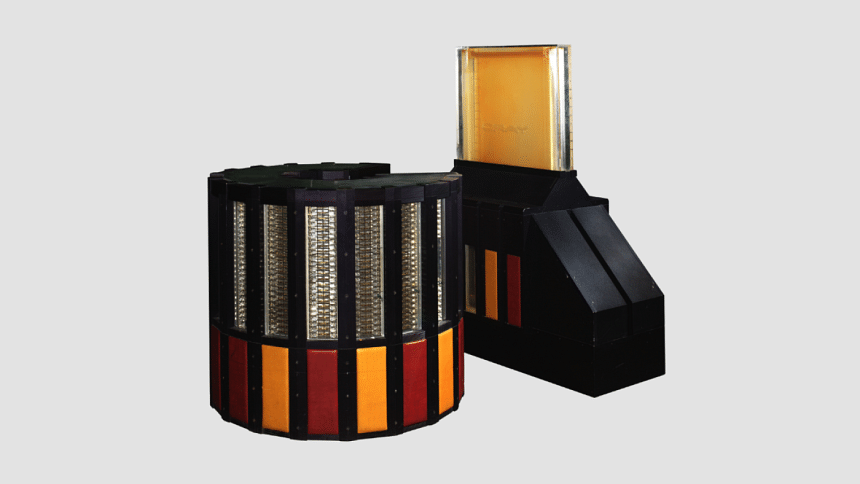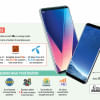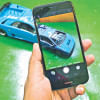How your smartphone compares to 1990s supercomputers

In just a few decades, the smartphone has gone from a luxury gadget to an everyday necessity. But what is often overlooked is just how powerful these small devices really are. Today's smartphones are thousands of times more powerful than the world's most advanced supercomputers from over 30 years ago - machines that once filled entire rooms and cost millions to operate.
Let's take a look at how the devices in our pockets measure up to the titans of 20th-century computing.
The giants of the 1990s: CRAY-2 and ASCI Red
The CRAY-2 supercomputer was considered the fastest and most powerful machine ever built in 1985. It achieved a world record peak performance of 1.9 gigaflops, that is, 1.9 billion floating-point operations per second (FLOPS). This marked a dramatic leap forward compared to the Apollo 11 guidance computer, which reportedly had a peak performance of 14,245 FLOPS, 16 years earlier.
The CRAY-2 was built for the United States Departments of Defense and Energy, primarily to assist with nuclear weapons research and ocean science projects. It had a distinctive cylindrical shape and relied on a liquid cooling system to keep it from overheating. Compared to today's devices, it used a huge amount of electricity to operate.

Fully operational since 1997, ASCI Red (also known as ASCI Option Red or TFLOPS) pushed the boundaries even further. It was the first computer to break the one-teraflop barrier on the LINPACK benchmark, a standard measure of computational performance, and later upgrades enabled it to exceed two teraflops. This supercomputer was built under the United States government's Accelerated Strategic Computing Initiative (ASCI), which was launched in the wake of the 1992 moratorium on nuclear testing. Its purpose was to model and simulate nuclear stockpile reliability without live detonations.
ASCI Red occupied over 1,500 square feet, required about 850 kilowatts of power, and was considered a monumental achievement in computational physics. Yet today, its capabilities are dwarfed by even modest consumer devices.
Your smartphone: a supercomputer in your hand
Fast forward to today. A modern smartphone, such as the iPhone 15 Pro with its Apple A17 Pro chip or a flagship Android device with a Snapdragon 8 Gen 3 processor, can achieve performance levels of around 2 teraflops, which is on par with or even exceeding what ASCI Red could deliver.
In raw terms, that makes your smartphone about 1,000 times faster than the CRAY-2, and comparable in compute performance to one of the most powerful machines of the late 1990s. But the differences do not stop there. Where CRAY-2 and ASCI Red required entire rooms and industrial cooling, your smartphone does it with less than 5 watts of power, all packed into a device that fits comfortably in your pocket.
What is more impressive is that this computing power is not limited to scientific modelling. You use it to stream high-resolution video, play advanced 3D games, participate in encrypted video calls, process AI-enhanced photos, and even convert scanned documents into PDFs on the go - tasks that were inconceivable for everyday consumers at the time of the CRAY-2's prime.
Efficiency, accessibility, and evolution
This leap in computing power also highlights a transformation in efficiency. Where 1990s supercomputers needed massive amounts of electricity and elaborate infrastructure, your smartphone can perform similar feats on battery power for hours or even days.
Moreover, your smartphone includes technologies that 1990s engineers could only dream of: ultra-fast wireless connectivity, secure facial recognition, GPS tracking, high-resolution touchscreens, and AI-based assistants like Siri and Google Assistant - all in one device. It is no longer just about raw performance; it is about versatility, accessibility, and miniaturisation.
From restricted labs to everyday life
Supercomputers like CRAY-2 and ASCI Red were tools of governments, available only to defence agencies and elite research institutions. Today, billions of people worldwide own devices far more capable, empowering them to communicate, create, explore, and compute in ways that were once reserved for national labs.
It is a testament to the pace of innovation and a reminder that the power once used to simulate nuclear explosions is now used to swipe through social media, get directions to the nearest coffee shop, and scan your boarding pass at the airport.
The next time you unlock your phone, remember: you are holding a device more powerful than NASA's computers during the Moon landing and, remarkably, more powerful than the best supercomputers of the 1990s.
That is the power of progress, literally in the palm of your hand.

 For all latest news, follow The Daily Star's Google News channel.
For all latest news, follow The Daily Star's Google News channel. 








Comments